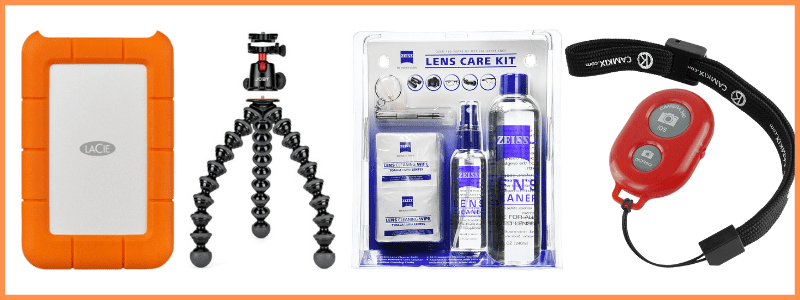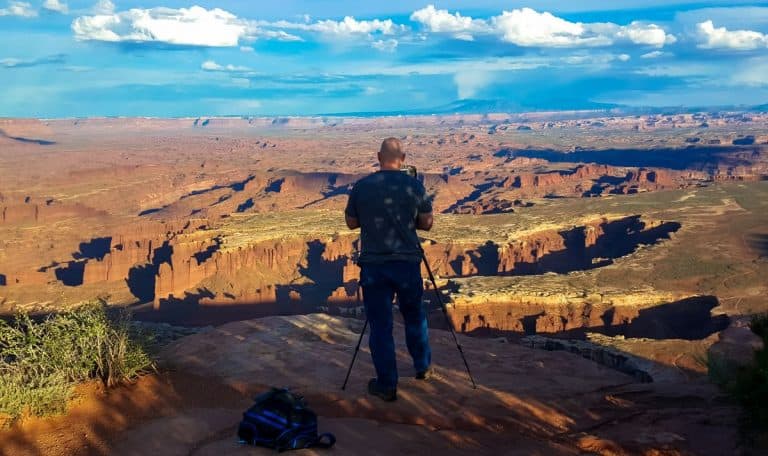Framing Photo Ideas for Landscape Photography
What does it mean to use framing in photography? Basically, it isolates a subject using elements in a scene as a frame. It’s a basic photography technique used to direct the viewer’s eye to the subject.
Take a look at the framing photo ideas to illustrate this compositional technique.

Use these ideas and tips to inspire you to use framing when taking your own pictures!
This site contains affiliate links which means WE may receive commissions for purchases made through these links. We only provide links to products we actually use and/or wholeheartedly recommend! As an Amazon Associate, we earn from qualifying purchases. Read the full Disclosure Policy.
Camera Gear for Landscape Photography
- Tripod: take a look at these compact and lightweight travel tripods!
- Camera Bag: protect your camera from sand and water → We use Lowepro camera backpacks for outdoor photography.
- Neutral density filter: to compensate for variance of light you’ll need to use a neutral density filter. → Check out the Kase magnetic filters we use!
- Camera cleaning kit: remove dust or water that WILL get on your lens. NOTE: this is not for cleaning the sensor.
- Memory cards: purchase name brand memory cards since you’re trusting your images to the card! → We use Lexar and Sandisk!
- External hard drive: copy photos to a portable external hard drive ‘just in case’.
- Headlamp: use when taking sunrise and sunset photos!
Camera Gear at B&H Photo
Photo Examples Using Framing
Learn more about how to use framing in photography. Take a look at the framing photo ideas shared by members of our Facebook Group, Your Photography Journey.
WATCH the video as we discuss how framing is used in each image.
Framing Photo Ideas
There are different types of framing in photography. The end goal is to use elements in a scene to highlight the subject by drawing the viewer’s eye into the frame.
Finding different ways to frame a subject may require some creativity. These framing photo ideas should help!
Architecture
Using architecture like windows and doors is a great way to frame a subject.
In the photo below, Denise Thomason composed the photo to include just enough of the doorway opening to create the dark frame around the lighter building in the distance.

The contrast of dark and light is striking. And the horizontal lines in the scene are level which is important!
In this photo by Bonnie Melnichenko, she adds the element of perspective to create interest.

A simple off-center shift of the camera adds a bit of dimension and depth!
Natural Objects
In this barn photo by James Griffin, he uses trees at the location to frame the subject.
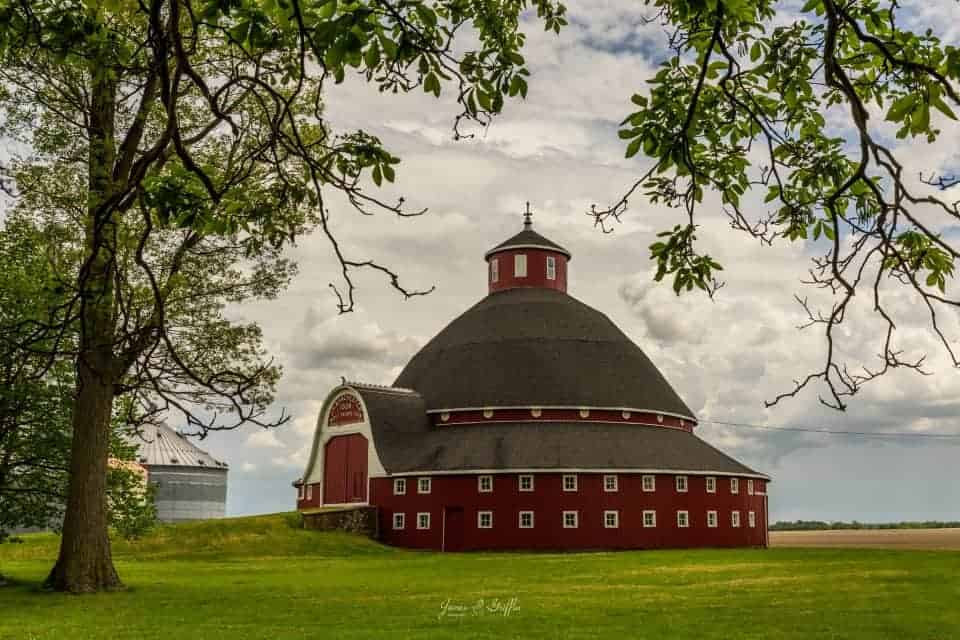
Framing the subject may require a bit of effort to walk around, look for natural objects and position yourself or the camera in just the right spot for the frame to work!
Alfredo Cruz found a piece of driftwood in this photo to frame the rocks in the distance.

Using perspective with framing is important because often, you’ll need to move your body or camera to align the opening with the subject.
In this terrific image by Roy Goldsberry, the rock opening frame draws the eye to the subject which is Delicate Arch and the surrounding landscape.
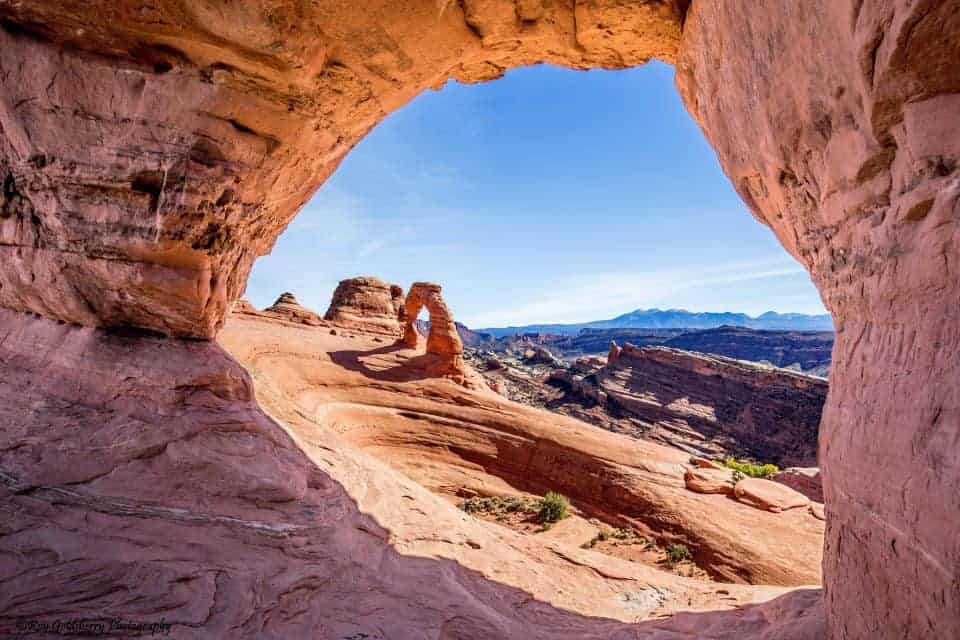
Do you see the layers here that add depth? The rock opening is the foreground; Delicate Arch and the bowl is the midground; and the far off mountains and sky is the background.
Framing is a great way to create depth in a photo with foreground, midground and background!
Environmental Objects
James Carro found a window opening, but used it in a unique way!

He positioned the camera so the window edges created a vignette effect that draws the eye right into the scene beyond!
In this photo by Jordan Jenkins, he also uses an object in the area to create a frame to lead the viewer’s eye to the bridge.

He has incorporated the pathway as a leading line toward the bridge as well.
Nadine Meyer uses a fence to frame and draw the viewer’s eye to the barn.

Using elements found at the scene help provide context and story to the photo. She’s also incorporated perspective and leading lines when composing this image as well!
Contrast
Implementing contrast is another way to add to the framing technique.
In this photo by Melanie Loughery, she uses elements in the scene to frame the sun, rays and clouds in the sky.

But the striking contrast of the dark silhouetted elements against the brighter sky adds that extra “wow” factor!
And in this photo by Sue Gordon, the dark silhouette elements frame the colorful sky and reflection in the water.

The color pops in this photo due to the contrast of the surrounding darker elements.
Don’t you just love this photo by Richey Oliver with the snow-covered branches that frame this barn?
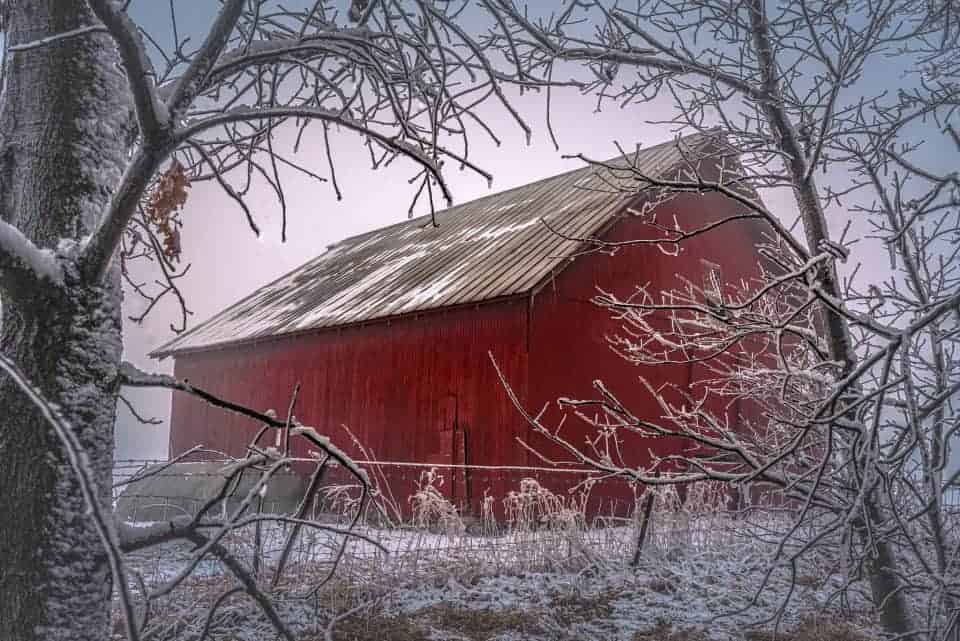
The contrast between the frame elements and the red barn help to draw your eye right to the subject!
AMAZON Landscape Photography Books:


